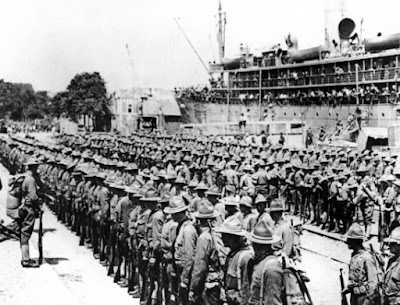If you are not familiar with the tremendous problems involved in getting the army to France here are a few facts and figures that help just a trifle:
An American infantry division consists of 22,000 men, 7,500 horses and 900 vehicles. To make up our suggested first army for foreign service would include probably five divisions, or 110,000 men, 37,500 horses and 4,500 vehicles, plus mechanical transportation and reserve food and ammunition.
In sending troops from Canada such a boat as the steamship Olympia carried six English battalions, artillery, etc., so that we can safely assume in one trip she could carry 8,000 men. Of this class of boat there are, we believe, four. The capacity of the smaller boats in the transport service ran from 1,500 to 3,000 men, so that 2,500 as an average is more hopeful than conservative.
An army of 110,000 in one trip would require the four large boats at 8,000 men, 32,000; thirty-one smaller boats at 2,500 men, 77,500; total, 109,500.
These men would require, at four pounds of food a man per day for sixty days (until normal freight conditions could be resumed), 13,200 tons of food.
In cartridges (assuming 40,000 effective rifles at thirty rounds a day per man for sixty days) 72,000,000 would be required, leaving all artillery ammunition out of the question.
 |
| First U.S. troops land at St. Nazaire in June 1917|Associated Press |


No comments:
Post a Comment